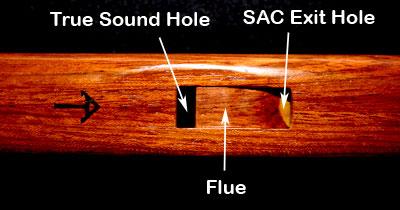Native American Style Flute Facts and Dimensions
I know that there are those who would like to have as much information as possible about Ancient Territories Native American style flutes. After all, unless you visit the shop, you cannot play the flute and examine it from every angle. So here I have provided photos and dimensions of the outside and inside of a typical flute. Dimensions may vary slightly from one flute to another.
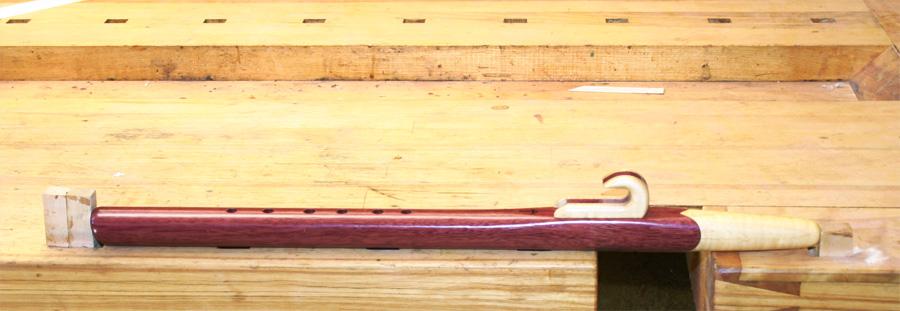
Love Flute Relative Weights
In order that you might get some idea of the relative weight of the different types of wood I have taken these measurements from an F# backpacker flute. I use hardwood species to make my Love flutes so you will find that they are heavier than those made from softwoods such as Cedar or Redwood.
Zebrawood 9.7 oz (275g)
Walnut 7.45 oz (211g)
Purpleheart 8.85 oz (252g)
Bubinga 10.7 oz (305g)
Love Flute Dimensions
The blow hole or mouth hole of all my flutes is 3/8 inches in diameter.
Here you will find the dimensions of flutes in the various keys that I make. For the positioning of the splitting edge I measure from the mouth end of the flute down. For the distance to the center of the 6 tone holes I measure from the mouth end of the flute down the flute.
Flute in the Key of C
Overall length 18 1/8 inches
Bore diameter 3/4 inch
Distance to splitting edge 7 1/2 inches
Distance to center of hole 6 – 10 11/16, hole 5 – 11 7/16, hole 4 – 12 1/8, hole 3 – 13 1/16, hole 2 – 14, hole 1 – 14 15/16 inches.
Flute in the Key of B
Overall length 19 1/8 inches
Bore diameter 3/4 inches
Distance to splitting edge 7 1/2 inches
Distance to center of hole 6 – 10 15/16, hole 5 – 11 3/4, hole 4 – 12 1/2 hole 3 – 13 5/16, hole 2 – 14 3/8, hole 1 – 15 7/16 inches
Flute in the Key of A
Overall length 21 1/4 inches
Bore diameter 7/8 inches
Distance to splitting edge 8 3/8 inches
Distance to center of hole 6 – 12 1/16, hole 5 – 12 15/16, hole 4 – 13 7/8, hole 3 – 14 13/16, hole 2 – 16 1/16, hole 1 – 17 1/8 inches
Flute in the Key of G
Overall length 23 inches
Bore diameter 7/8 inches
Distance to splitting edge 8 3/8 inches
Distance to center of hole 6 – 12 7/8, hole 5 – 13 13/16, hole 4 – 14 13/16, hole 3 – 15 13/16, hole 2 – 17 1/16, hole 1 – 18 5/16
Flute in the Key of F#
Overall length 24 inches
Bore diameter 7/8 inches
Distance to splitting edge 8 3/8 inches
Distance to center of hole 6 – 13 3/8, hole 5 – 14 5/16, hole 4 – 15 1/2, hole 3 – 16 3/4, hole 2 – 18, hole 1 – 19 1/4 inches
Flute in the Key of F
Overall length 25 inches
Bore diameter 1 inch
Distance to splitting edge 8 3/8 inches
Distance to center of hole 6 – 13 7/16, hole 5 – 14 9716, hole 4 – 15 5/8, hole 3 – 17, hole 2 – 18, 3/8, hole 1 – 19 11/16
Flute in the Key of E
Overall length 26 inches
Bore diameter 1 inch
Distance to splitting edge 8 3/8 inches
Distance to center of hole 6 – 13 7/8, hole 5 – 14 7/8, hole 4 – 16 1/8, hole 3 – 17 1/2, hole 2 – 18 7/8 hole 1 – 20 3/8 inches
Flute in the Key of Eb
Overall length 27 1/4 inches
Bore diameter 1 inch
Distance to splitting edge 8 3/8 inches
Distance to center of hole 6 – 14, hole 5 – 15 5/8, hole 4 – 16 7/8, hole 3 – 18 3/8, hole 2 – 19 7/8, hole 1 – 21 3/8 inches
Flute in the Key of D
Overall length 28 inches
Bore diameter 1 1/8 inch
Distance to splitting edge 8 1/2 inches
Distance to center of hole 6 – 14 1/4, hole 5 – 15 3/8, hole 4 – 16 3/4, hole 3 – 18 3/8, hole 2 – 20 1/8, hole 1 – 21 3/8 inches
Flute in the Key of C
Overall length 30 3/8 inches
Bore diameter 1 1/4 inch
Distance to splitting edge 8 1/4 inches
Distance to center of hole 6 – 14 5/16, hole 5 – 15 5/8, hole 4 – 17 1/16, hole 3 – 19 3/16, hole 2 – 21 3/16, hole 1 – 22 5/8 inches
Ancient Territories Love Flute Cross Section
 Here is a representation of the cross section of one of my flutes.
Here is a representation of the cross section of one of my flutes.
It shows the triangular shape of an Ancient Territories flute. You can see the distinctive flattened top.
A 1 inch bore used for Love flutes in the key of F, E and Eb – side to side at maximum width 1 3/8 inches. Top to bottom 1 11/6 inches
A 7/8 inch bore is used on flutes in the key of F#, G and A – side to side at maximum width 1 19/32 inches. Top to bottom 1 7/32 inches.
A 3/4 inch bore is used on Native American style flutes in the key of B and C – side to side at maximum width 1 9/16 inches. Top to bottom 1 7/16 inches.
Below is a picture of an Ancient Territories Native American style flute that I have cut in half lengthwise.
Now you can see what the inside of one of my Love flutes looks like.

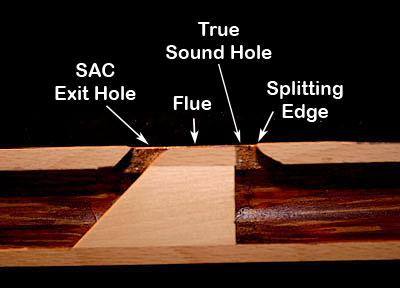 3/8 inch diameter blow hole leading to the Slow Air Chamber. The SAC is sealed with epoxy resin to resist moisture absorption. Moisture absorption can lead to cracking of the flute.
3/8 inch diameter blow hole leading to the Slow Air Chamber. The SAC is sealed with epoxy resin to resist moisture absorption. Moisture absorption can lead to cracking of the flute.
A Plug of solid wood separates the SAC from the bore of the flute. It is made from a birch (hardwood) dowel soaked in polyurethane. The polyurethane helps seal the plug form absorbing moisture and expanding in diameter. Expansion of the plug could lead to cracking of the flute.
The Ramp gently directs air from the SAC to the flue. It is important that the air be allowed to flow smoothly into, through and out of the SAC to get good tonal quality.
The Flue is cut into the body of the flute. It carries air from the SAC and directs it against the Splitting Edge. The splitting edge is in the center of the stream of air exiting the flue. This is important to achieve volume and clarity of tone.
The True Sound Hole is the hole opposite the SAC exit hole. This is the sound generating mechanism of the flute. The dimensions of the TSH are vitally important to sound quality. All surfaces must be clean and smooth.
Bore of flute. The bore is sealed with a coat of polyurethane and then sanded smooth. A sealed, smooth bore is important for tonal quality.
Ancient Territories Love Flute 'Sound Wave' Bird
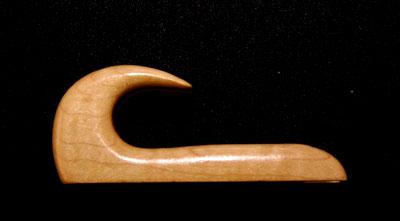
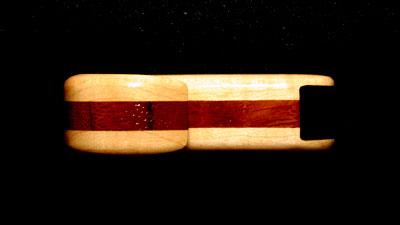
Chimney
The extensions on the front of the bird form what is called the Chimney.
The chimney helps focus the stream of air coming out of the flue and protect it from disturbances from cross air currents.

